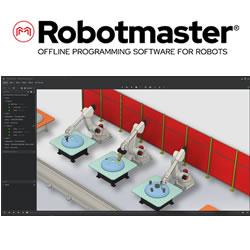From the Airborne to the Freeway-Bound, Velodyne to Address Tech Challenges Facing Automated Vehicles; Unmanned Systems Institute Panel Set for Dec. 15
Velodynes Eggert to Join Session at San Diego Event, Assessing Transportation Hurdles – and How to Overcome Them
Morgan Hill, CA December 15, 2015 -- Autonomous vehicles are en route - but what bumps might they encounter along the way? With as much real world experience on land and in the air as anyone in the market, Velodyne LiDAR will weigh in during a high-level panel at the Unmanned Systems Institutes 2015 Conference, set for today, Dec. 15, in San Diego.
John Eggert, Velodynes Senior Sales & Marketing Manager, Automotive, will join Luca Delgrossi, U.S. Director, Autonomous Driving, Mercedes-Benz R&D North America, and moderator Maryanna Saenko, Research Analyst, Lux Research, to examine "Automated Vehicle Technology Challenges," at 1:20 p.m. at the Sheraton San Diego Hotel & Marina (http://unmannedsystemsinstitute.com/event/agenda-2015/).
The Unmanned Systems Institute (USI) is a leading organization committed to bringing together private and public sector stakeholders fostering the growth and effective use of unmanned systems technology. Through collaborative efforts, USI provides programs that drive innovation, educate, and provide a critical understanding of how unmanned systems applications, solutions and hardware can improve culture, society and industry.
The panels charge: identify the biggest technology challenges companies are facing in automated vehicle development - from software for mapping systems to external cameras and vehicle sensors - and evaluate innovative ideas and potential solutions to overcome them. Panelists will consider how businesses are addressing human factors, including such obstacles as construction zones and social cues on the road, and how the physical world poses some vexing hurdles for programmers.
"This panel is an ideal fit for our expertise and experience in addressing the full scope of challenges and opportunities for autonomous vehicles, whether theyre land-based or airborne," Eggert said, in a preview of his remarks. "Our 3D, real-time LiDAR solutions have been deployed on a diverse range of unmanned ground-based vehicles, dating from the DARPA Grand Challenge more than a decade ago, to Fords participation in the new M-City, Detroit, today.
"The same applies to UAVs equipped with our sensors, where weve obtained quantitative 3D measurements from the air using LiDAR for such applications as 3D mapping, oil & gas, power line inspection, mining volumetric measurements, and sense-and-avoid during the flight and when landing in unknown locations," he said. "Most recently, CNBC aired a segment [see http://velodynelidar.com/news.php#190 featuring an unmanned flight, mapping inside a building using a Velodyne VLP-16 LiDAR Puck and real-time SLAM - without GPS - powered by technology from Real-Earth Autonomy (http://www.realearth.us/)."
According to Eggert, Velodyne is redoubling its commitment to serve both ground and airborne markets with products in the pipeline. The companys next generation Automotive VLP ADAS sensor improves safety on Levels 3 and 4, and enables full autonomy (Levels 4 and 5), at a target price of less than $500 in automotive volumes. Velodynes UAV VLP is expected to be even lighter than the current offering, which weighs in at just over 800 grams, thereby enabling smaller-scale UAVs to carry a Velodyne LiDAR payload or facilitate longer flight times on midsize UAVs.
About Velodyne LiDAR
Founded in 1983 and based in Californias Silicon Valley, Velodyne Acoustics, Inc. is a diversified technology company known worldwide for its high-performance audio equipment and real-time LiDAR sensors. The companys LiDAR division evolved after founder/inventor David Hall competed in the 2004-05 DARPA Grand Challenge using stereovision technology. Based on his experience during this challenge, Hall recognized the limitations of stereovision and developed the HDL-64 high-resolution LiDAR sensor. Velodyne subsequently released its compact, lightweight HDL 32E sensor, available for many applications including UAVs, and the new VLP-16 LiDAR Puck, a 16-channel real-time LiDAR sensor that is both substantially smaller and dramatically less expensive than previous generation sensors. Market research firm Frost & Sullivan has honored the company and the VLP-16 with its 2015 North American Automotive ADAS (Advanced Driver Assistance System) Sensors Product Leadership Award. Since 2007, Velodynes LiDAR division has emerged as the leading developer, manufacturer and supplier of real-time LiDAR sensor technology used in a variety of commercial applications including autonomous vehicles, vehicle safety systems, 3D mobile mapping, 3D aerial mapping and security. For more information, visit http://www.velodynelidar.com.
Featured Product

Robotmaster® 2024
Program multi-robot cells and automatically solve robotic errors with ease. Hypertherm Associates announces a new version to its robotic programming software. Robotmaster 2024 addresses key market trends including the support for programming multiple robots in a single work cell and the demand for automatic trajectory optimization and robotic error correction.
